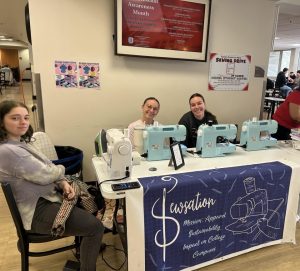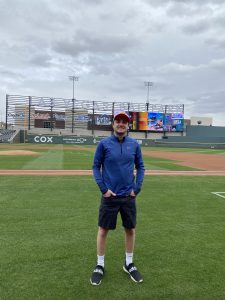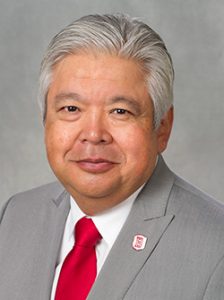World War II was a confrontation that changed the world in more ways than one. Hitler’s systematic genocide is a story that will never be forgotten, but is also a story so big that historians often miss details.
The Armstrong Lecture Series, sponsored by the History Department,hosted “Building the Holocaust: Spaces of Genocide and Survival” with guest speaker Paul Jaskot Wednesday.
During their research Jaskot and Knowles found that in the space that the survivors were in was built by their forced labor.Surprisingly, women were assigned more brutal tasks, such as digging and hauling.
In one example, Jaskot described the conditions of a woman who was forced to carry bags that were 52 pounds for several hours for several weeks. Many women, such as the woman described, would die from heart attacks from the strain of the labor.
Another aspect Jaskot focused on was the architecture and the role it played in the camps.
“Buildings are important sites that represent an ideological sense of the Holocaust,” Jaskot said. “The history of the Holocaust is the perpetrators’ beliefs along with the feelings and experiences of the victims which as a whole provide a greater understanding of the Holocaust.”
Jaskot was a professor in the Department of the History of Art and Architecture at DePaul University. He also directed the Summer Institute of the Holocaust Education Foundation at Northwestern University, as well as the Summer Institute on Digital Mapping and Art History at Middlebury College.
Jaskot, along with co-researcher Anne Kelley Knowles, collaborated with a number of people. They used their knowledge to approach the Holocaust by involving architecture, spacial environment and computer science.
Using their specific approach to analyze the events that occurred in concentration camps – specifically in Auschwitz-Birkenau, one of the largest concentration camps during WWII – they were able to study how the victims were confined to an oppressive space, gathered together and murdered as well as how some survived the ordeal.
“Art and architecture let us know, ” Jaskot said. “I’m angry. I’m angry when I see documents or architecture or other important pieces being overlooked by other historians, and I didn’t want that, so I decided to research the architecture of the concentration camps and the space of it.”
Jaskot’s lecture consisted of the research that was produced by Knowles and himself along with various collaborators on the space and architecture of Auschwitz-Birkenau. He presented the plans for the expansion of Auschwitz, a testimony of Bela Korn, a Polish Jew and her account and the digital plan they mapped out.
The result of their work was a greater understanding of the occurrences in Auschwitz and a more pieced history of the violence and mistreatment of the Jews and non-Jewish prisoners.
“I was surprised about the layout of Auschwitz,” senior advertising major Jill Stafford said. “How the sauna was next to the slaughterhouse, how they were comfortable with a relaxation building next to a crematory that was used for genocide.”
The Department of History under the Armstrong Lecture Series hopes to bring another guest speaker in the spring.
“We have brought in an art historian who uses cross disciplinary approaches for his work,” history professor John Williams said. “Usually, we have a straightforward political historian for these lectures.”
The History Department plans to start working with other scholars studying the humanities in the future, as well as the Computer Science Department, in order to create a mapping project similar to Jaskot’s.




